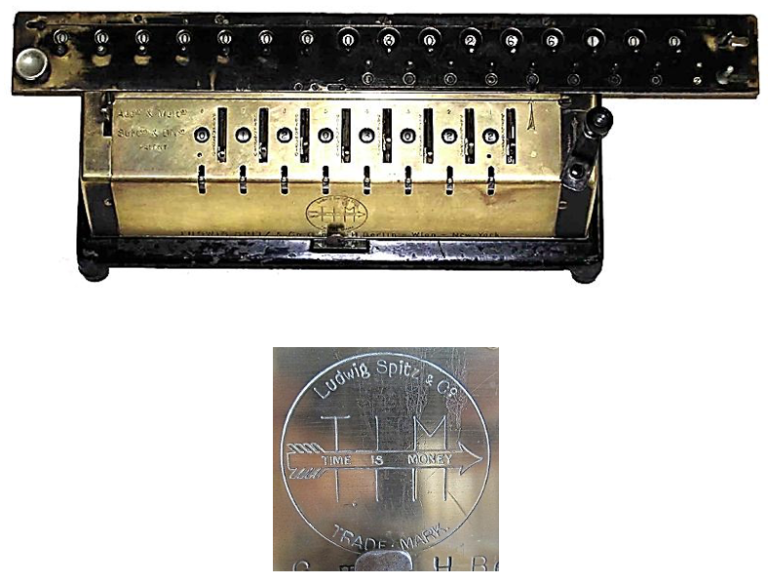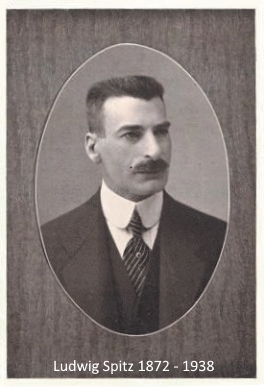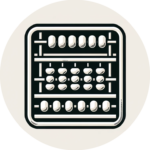T I M, 1920
Inventor
Model derived from X. THOMAS DE COLMAR Arithmometer
Invention date
Around 1920
Manufacturing date:
Unkown
Manufacturing location
Berlin Germany
Manufacturer
LUDWIG SPITZ & Co. GmbH
Dimensions
L 54 H 17 W 15
Reference Number
003

History and Functionality
TIM stands for “Time Is Money”.
This machine is extremely robust and dedicated to accounting work.
Despite its high price, it was a great commercial success.
Originally (1907), these instruments were produced in wooden chests. Early versions were improved in 1909 by engineer Robert KIDNEY.
This TIM machine offers technical improvements over its predecessors, making it more reliable. It has a delete command that lets you choose from what rank you want to reset the setting mechanism. A lap counter appears under the result mechanism on the movable carriage. It has wheels to set it to an initial value. This machine has also been designed to be cleaned and greased easily.
Production of various TIM models lasted 43 years from 1907 to 1950.
About The Manufacturer
Ludwig Spitz & Co. GmbH, founded by the innovative German engineer Ludwig Spitz, played a pivotal role in the development of the T.I.M (Taschenrechner Industrie-Mechanik) calculating machine. Ludwig Spitz, whose engineering prowess and visionary approach to mechanical calculators were well-known in his era, began his journey in the early 20th century.
Initially, Ludwig Spitz engaged in the manufacturing of precision mechanical devices in Nuremberg, Germany. The city, known for its rich history in craftsmanship and industrial innovation, served as a fertile ground for Spitz’s entrepreneurial and technical ambitions. In the year 1904, he established Ludwig Spitz & Co. GmbH, a company dedicated to the advancement of calculating technology.
The T.I.M, an acronym for “Taschenrechner Industrie-Mechanik”, was a groundbreaking development in the field of mechanical calculators. Ludwig Spitz’s inspiration for T.I.M stemmed from his fascination with making complex calculations more accessible and efficient. He envisioned a device that could perform various arithmetic operations with ease, accuracy, and speed.
The T.I.M quickly gained popularity among businesses and educational institutions, praised for its precision and reliability. It was lauded as a triumph of German engineering and craftsmanship, embodying the meticulous attention to detail and quality that Ludwig Spitz & Co. GmbH was known for.
Despite facing competition from emerging technologies and electronic calculators, the T.I.M maintained a loyal user base, thanks to its durability and the prestige associated with owning a Ludwig Spitz creation.

